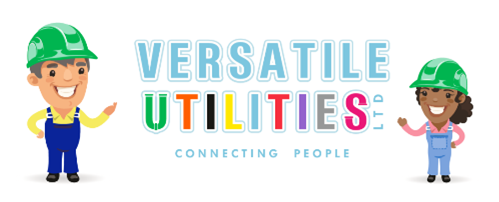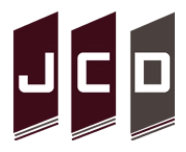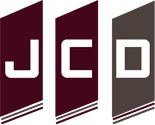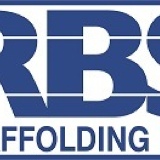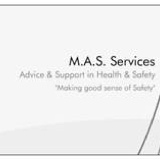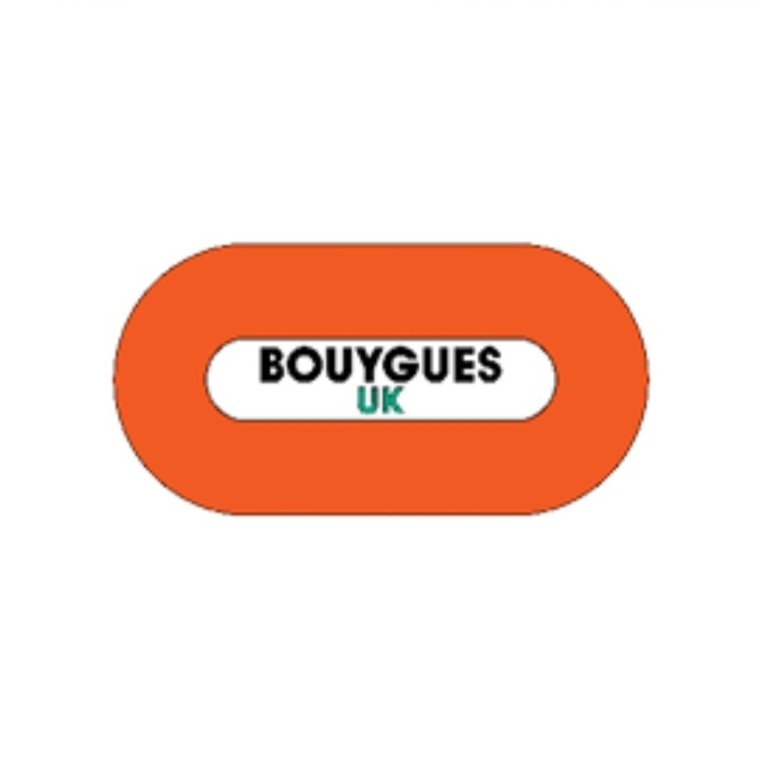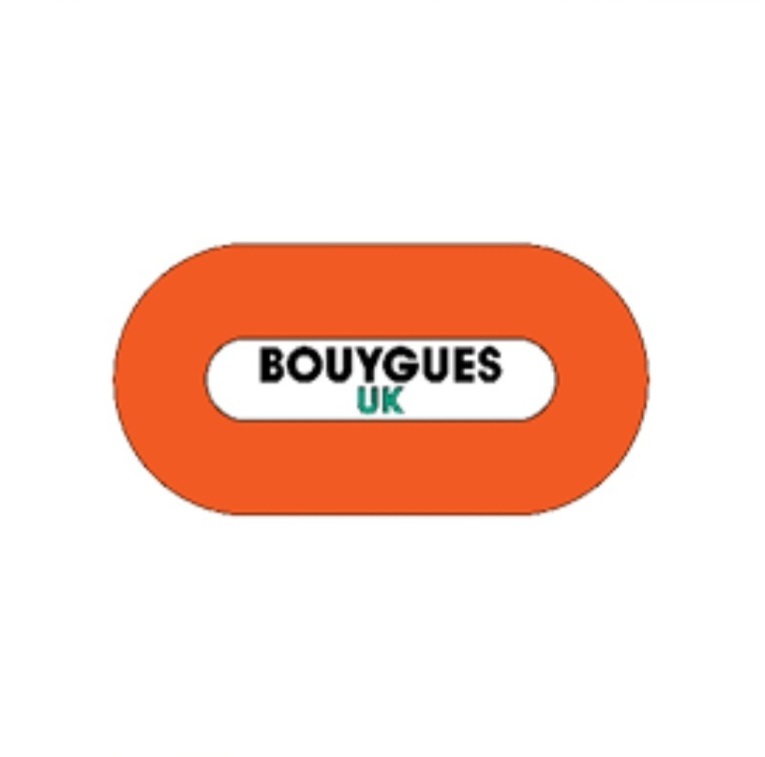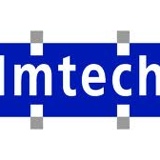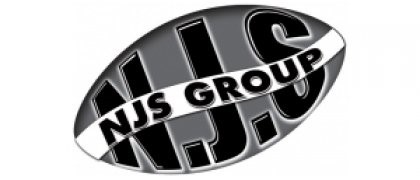Information
-
Client
-
Site/Contract
-
Location
-
who is completing this document
-
What Plant is being used today
- Dumper
- Excavator
- Pipe Trailer
- Welfare unit
- Winch
- other
-
what plant is being used
-
What Hand tools are being used today
- Electrofusion Box
- Cat and Genny
- Disc Cutter
- Generator
-
Conducted on
Scope of works
-
what what is to be undertaken
- excavations up to 1.2 metres
- Excavations over 1.2 Metres
- Trail Holes
- Backfill and reinstatement
- Electrofusion welding of PE Pipe
-
Sequence of Works
Upon arrival to site ensure the works vehicle and any others engaged in the works are parked safely and will not cause an obstruction or hazard to pedestrians, other road users and emergency services.
The Ganger shall survey the area to ensure all potential hazards have been identified and complete VU-FM-01 Point of Work Risk Assessment. Establish suitable control measures prior to commencing work.
Sign, light and guard the proposed working area in accordance with the “Safety at Street Works and Road Works – A Code of Practice” document. All works affecting the public highway must be supervised by a person having a Supervisor NRSWA qualification. See separate method statement Signing, Lighting and Guarding Package 8 SMB1815-MS-01.
Before any work is carried out on site all necessary utility drawings must be available on site and must be clear, of suitable scale, include a symbol legend have an issue date of less than 3 months before the date the works are to be carried out. If the drawings are older than 3 months, a new set must be requested before any works can be carried out. Please note that all gas utility drawings must have an issue date of less than 28 days before the date the works are to be carried out. Supervisor and Ganger to study the safe dig prints, carry out a scan using the CAT4 and Genny, and a visual check of the proposed excavation to detect existing services in the area. Any services located are to be clearly marked on the ground.
Supervisor to mark out area of excavation.
Permit to Break Ground to be issued by the Supervisor to the Ganger. The permit to break ground is to be completed prior to any invasive breaking / cutting or excavation below current surface level. The permit is to be retained on site.
Under NO circumstances will any excavation works be carried out if the utility drawings are not available and a Permit to Break Ground has not been issued.
All existing services where possible shall be exposed by trial holes to physically identify the service. Refer to Method Statement VU-MS-02 Trial Holes. Underground services shall be exposed in accordance with HSG 47. No hand-held power tools or mechanical plant shall be used within 500mm of a known buried service.
Where underground services have been exposed and undermined they must be temporarily supported until back filling is complete. Once services are exposed they should never be used as handholds or footholds for climbing out of excavations.
Make frequent and repeated use of the CAT and Genny during the course of the excavation. Service location is more accurate as cover is removed. Use the CAT and Genny every 300mm depth.
For bitumen footpaths and roads the excavation perimeter will be cut (if required) with the aid of a floor saw. The bitumen surface will then be broken up by pneumatic breaker into manageable sections and removed by excavator/dumper to a designated area for disposal and removal from site.
For topsoil or hardcore surfaces a mechanical excavator fitted with a toothless bucket will be employed to remove the first layer. A Slinger / Signaller must be attendance to closely monitor the excavator bucket and alert the operator of any danger.
Excavator and hand digging will advance the excavation until the required depth is achieved. An air pick should be prioritised for use to break up fill materials to aid hand digging where applicable.
All excavation works shall be carried out carefully and following recognised safe digging practices. Excavation work can commence using mechanical aids ensuring that such equipment is not used within 500mm of any live unprotected service.
If a buried service suffers any damage during the excavation or subsequent work, inform your Supervisor immediately.
Ground conditions will be continually monitored by the Ganger. Ground conditions will determine whether shoring equipment is required. It will be the Supervisor’s responsibility to determine if the excavation requires supporting and if so will refer to Trench Support Designs documents. If in doubt contact should be made to the Temporary Works Coordinator.
If any work in an excavation requires a person to bend down so that their head is below the general ground level, then an assessment should be done by the Supervisor to assess if there are any additional hazards. Additional hazards can arise from ground contamination/poisonous gases, insufficient oxygen, a leaking gas service or unstable ground.
The gang will ensure where possible that the sides of the excavation are even and vertical with no significant undercutting of the road surface.
All excavated material will be placed at least a metre away from the edge of the excavation so as to prevent undue loading on the excavation sides.
The gang will ensure that the excavated material is not stockpiled too high thus avoiding the risk of the material sliding / slipping back into the excavation.
Where appropriate ensure that access to and from the excavation is by use of a ladder positioned on a firm base, tied and footed.
All excavations and shoring equipment will be inspected prior to the start of each shift in order to identify any possible problems. The details of all such inspections will be recorded within the excavation register within the gangs safety pack.
The Supervisor will ensure that a sump or sumps are dug within the excavated area in order to collect any water that may run into the working area. All such water being pumped out onto grassed areas in order to prevent silt entering the surface water drains. In the event of a grassed area not being available, suitable alternative methods will be adopted.
The excavated material will be removed from site by a licensed waste carrier and taken to a licensed tip for recycling/disposal.
See separate Method Statement vu-MS-05 Backfill and Reinstatement. -
Sequence of Works
Upon arrival to site ensure the works vehicle and any others engaged in the works are parked safely and will not cause an obstruction or hazard to pedestrians, other road users and emergency services.
The Ganger shall survey the area to ensure all potential hazards have been identified and complete VU-FM-01 Point of Work Risk Assessment. Establish suitable control measures prior to commencing work.
Sign, light and guard the proposed working area in accordance with the “Safety at Street Works and Road Works – A Code of Practice” document. All works affecting the public highway must be supervised by a person having a Supervisor NRSWA qualification. See separate method statement Signing, Lighting and Guarding VU-MS-01.
Before any work is carried out on site all necessary utility drawings must be available on site and must be clear, of suitable scale, include a symbol legend have an issue date of less than 3 months before the date the works are to be carried out. If the drawings are older than 3 months, a new set must be requested before any works can be carried out. Please note that all gas utility drawings must have an issue date of less than 28 days before the date the works are to be carried out. Supervisor and Ganger to study the safe dig prints, carry out a scan using the CAT4 and Genny, and a visual check of the proposed excavation to detect existing services in the area. Any services located are to be clearly marked on the ground.
Supervisor to mark out area of excavation.
Permit to Break Ground to be issued by the Supervisor to the Ganger. The permit to break ground is to be completed prior to any invasive breaking / cutting or excavation below current surface level. The permit is to be retained on site.
Under NO circumstances will any excavation works be carried out if the utility drawings are not available and a Permit to Break Ground has not been issued.
All existing services where possible shall be exposed by trial holes to physically identify the service. Refer to Method Statement VU-MS-02 Trial Holes. Underground services shall be exposed in accordance with HSG 47. No hand held power tools or mechanical plant shall be used within 500mm of a known buried service.
Where underground services have been exposed and undermined they must be temporarily supported until back filling is complete. Once services are exposed they should never be used as handholds or footholds for climbing out of excavations.
Make frequent and repeated use of the CAT and Genny during the course of the excavation. Service location is more accurate as cover is removed. Use the CAT and Genny every 300mm depth.
The initial excavation will be undertaken to a depth of 1.0m using a 360o excavator. A Slinger/Signaller must be attendance to closely monitor the excavator bucket and alert the Operator of any danger.
Reference will then be made to the temporary works design. This will dictate the type of shoring to be installed.
The excavation will continue to be excavated until the required depth is achieved.
Constant checks will be carried out to ensure that the ground conditions, ground water and surcharge conditions are continually monitored during excavation.
Shoring will be installed in accordance with the temporary works design and installation sequence and supplier guidelines. The Supervisor will be responsible for ensuring it is installed at per the design.
All lifting of shoring equipment will be as per lift plan.
All excavated material will be placed at least a metre away from the edge of the excavation so as to prevent undue loading on the excavation sides.
The gang will ensure that the excavated material is not stockpiled too high thus avoiding the risk of the material sliding / slipping back into the excavation.
Where appropriate ensure that access to and from the excavation is by use of a ladder positioned on a firm base, tied and footed.
All excavations and shoring equipment will be inspected prior to the start of each shift in order to identify any possible problems. The details of all such inspections will be recorded within the excavation register within the gangs safety pack.
The Supervisor will ensure that a sump or sumps are dug within the excavated area in order to collect any water that may run into the working area. All such water being pumped out onto grassed areas in order to prevent silt entering the surface water drains. In the event of a grassed area not being available, suitable alternative methods will be adopted.
The excavated material will be removed from site by a licensed waste carrier and taken to a licensed tip for recycling/disposal.
See separate Method Statement VU-MS-04 Backfill and Reinstatement.
Note: A deep excavation is classified as a confined space, therefore any person entering a deep excavation should be confined spaced trained. A gas monitor must monitor the atmosphere in the excavation. -
equence of Works
Upon arrival to site ensure the works vehicle and any others engaged in the works are parked safely and will not cause an obstruction or hazard to pedestrians, other road users and emergency services.
The Ganger shall survey the area to ensure all potential hazards have been identified and complete VU-FM-01 Point of Work Risk Assessment. Establish suitable control measures prior to commencing work.
Sign, light and guard the proposed working area in accordance with the “Safety at Street Works and Road Works – A Code of Practice” document. All works affecting the public highway must be supervised by a person having a Supervisor NRSWA qualification. See separate method statement Signing, Lighting and Guarding VU-MS-01.
Before any work is carried out on site all necessary utility drawings must be available on site and must be clear, of suitable scale, include a symbol legend have an issue date of less than 3 months before the date the works are to be carried out. If the drawings are older than 3 months, a new set must be requested before any works can be carried out. Please note that all gas utility drawings must have an issue date of less than 28 days before the date the works are to be carried out. Supervisor and Ganger to study the safe dig prints, carry out a scan using the CAT4 and Genny, and a visual check of the proposed excavation to detect existing services in the area. Any services located are to be clearly marked on the ground.
Supervisor to mark out area of excavation.
Permit to Break Ground to be issued by the Supervisor to the Ganger. The permit to break ground is to be completed prior to any invasive breaking / cutting or excavation below current surface level. The permit is to be retained on site.
Under NO circumstances will any excavation works be carried out if the utility drawings are not available and a Permit to Break Ground has not been issued.
All existing services where possible shall be exposed by trial holes to physically identify the service. Refer to Method Statement VU-MS-02 Trial Holes. Underground services shall be exposed in accordance with HSG 47. No hand held power tools or mechanical plant shall be used within 500mm of a known buried service.
Where underground services have been exposed and undermined they must be temporarily supported until back filling is complete. Once services are exposed they should never be used as handholds or footholds for climbing out of excavations.
Make frequent and repeated use of the CAT and Genny during the course of the excavation. Service location is more accurate as cover is removed. Use the CAT and Genny every 300mm depth.
The initial excavation will be undertaken to a depth of 1.0m using a 360o excavator. A Slinger/Signaller must be attendance to closely monitor the excavator bucket and alert the Operator of any danger.
Reference will then be made to the temporary works design. This will dictate the type of shoring to be installed.
The excavation will continue to be excavated until the required depth is achieved.
Constant checks will be carried out to ensure that the ground conditions, ground water and surcharge conditions are continually monitored during excavation.
Shoring will be installed in accordance with the temporary works design and installation sequence and supplier guidelines. The Supervisor will be responsible for ensuring it is installed at per the design.
All lifting of shoring equipment will be as per lift plan.
All excavated material will be placed at least a metre away from the edge of the excavation so as to prevent undue loading on the excavation sides.
The gang will ensure that the excavated material is not stockpiled too high thus avoiding the risk of the material sliding / slipping back into the excavation.
Where appropriate ensure that access to and from the excavation is by use of a ladder positioned on a firm base, tied and footed.
All excavations and shoring equipment will be inspected prior to the start of each shift in order to identify any possible problems. The details of all such inspections will be recorded within the excavation register within the gangs safety pack.
The Supervisor will ensure that a sump or sumps are dug within the excavated area in order to collect any water that may run into the working area. All such water being pumped out onto grassed areas in order to prevent silt entering the surface water drains. In the event of a grassed area not being available, suitable alternative methods will be adopted.
The excavated material will be removed from site by a licensed waste carrier and taken to a licensed tip for recycling/disposal.
See separate Method Statement VU-MS-04 Backfill and Reinstatement.
Note: A deep excavation is classified as a confined space, therefore any person entering a deep excavation should be confined spaced trained. A gas monitor must monitor the atmosphere in the excavation. -
Upon arrival to site ensure the works vehicle and any others engaged in the works are parked safely and will not cause an obstruction or hazard to pedestrians, other road users and emergency services.
The Ganger shall survey the area to ensure all potential hazards have been identified and complete VU-FM-01 Point of Work Risk Assessment. Establish suitable control measures prior to commencing work.
Backfilling should follow pipe placement as closely as possible to prevent the pipe from being shifted out of line by cave ins, protect the pipe from external damage, eliminate pipe lifting due to flooding of open trench etc.
The Ganger is responsible for ensuring that all materials used for reinstatement are of the correct standard and are correctly compacted.
Prior to commencing the reinstatement, the Ganger will ensure that he is familiar with the correct road construction type.
The Ganger will ensure that the pipe and associated connections are in an acceptable condition. A check will be made to ensure that the pipe has been placed on a firm bed and that all other services are adequately supported to prevent damage during the backfilling process. Other than when jointing, the gang will ensure that watertight stoppers are placed on the end of all pipe-work to prevent the ingress of dirt, materials, vermin etc.
The associated pipe-work will be protected by a suitable granular material prior to reinstatement to the depths indicated below:
Nominal Bore
Thickness of bed and surround
Less than 200mm
100mm
Greater than 200mm
150mm
The gang will ensure that the backfill material is placed into the excavation in layers and compacted as specified in HAUC.
Unless others agreed/stated, all excavations will be permanently reinstated using suitable materials to match the existing surfaces as far as is reasonably practicable.
When laying in adverse conditions the Supervisor will ensure that:
The laying of blacktop will be suspended whilst freestanding water is present on the proposed surface to be covered.
Coated Macadam and/or HRA are not laid on any surface which is frozen or covered with ice/snow.
Laying will cease when air temperature reaches 0o C on a falling thermometer. When surfaces are dry and free ice, it is permissible for laying to proceed at an air temperature of above -1o C on a rising thermometer.
Surplus spoil will be removed from site by grab lorry. When the grab lorry is on site, a Slinger/Signaller will direct and assist the driver. All flashing lights/beacons and warning systems are to be in working order and used when the grab lorry is in operation on site. -
Ganger to set up appropriate tent shelter and ground sheet. This must be used to protect the welding operations from the open environment and adverse weather conditions.
Prior to commencing the operation, all surface water will be pumped out of the trench. In the event of the trench being dry, the gang will damp down any/all areas in which there are areas of dust within the excavation.
New pipes are lifted into position for jointing by 3600 excavator, or for small diameter pipes by manual handling techniques. Coil pipes will be positioned by pipe trailer and jointed.
Clean pipe ends to remove contamination. When contamination is present on the pipe or coupler, fusion becomes increasingly more difficult to achieve. All mud and dirt will be washed from the surface of the pipe with clean water and dried with new paper tissues prior to scraping.
Check condition of pipe to see if it can be welded. Both pipe ends shall be inspected for ovality and re-rounded using appropriate clamps, or cut back until correct ovaility can be achieved.
Mark the depth of penetration of the pipe into the coupler on the surface of the pipe. The pipe will then be scraped using approved mechanical scraper along its length to a position at least 25mm beyond the surface mark.
Mechanically scrape pipe end to remove oxidised layer. Scraping is required to remove the degraded layer of polymer present on PE pipes. Mechanical scrapers provide a uniform removal of between 0.2 to 0.4mm during pipe end preparation.
Visually inspect scraped area to ensure it is clean and free from contamination.
If there is visible contamination present then the pipe end requires pad wiping. If more than 60 seconds elapse or visible dust or dirt has been around to settle then isopropanol alcohol wipes should be used. Use 4 or 5 fresh wipes for each prepared area. Gently wipe the prepared surface applying minimal pressure. This ensures the isopropanol alcohol wipes attracts contamination and does not leave moisture on prepared surfaces. Applying pressure can smear contamination around the prepared surface. Using a single isopropanol alcohol wipe can promote cross contamination from dirty hands through the isopropanol alcohol wipe onto the prepared area.
Do not contaminate the end of the pipe or the cleaned surface by touching it.
Welder to open one side of the electrofusion coupler fitting bag and push fitting over prepared pipe with bag still in place. Ensure the coupler is pushed fully home, stop and mark position on the surface of the pipe with permanent marker pen. Never use fittings that have had the protective covering removed.
Repeat the process above for the second pipe. Clean and then mechanically scrape pipe end to remove oxidised layer.
Visually inspect scraped area to ensure it is clean and free from contamination.
Slide coupling in place and mark position of pipe with permanent marker.
Use alignment clamp to restrict movement during fusion time. The clamp must be fitted to both pipe ends, either side of the fitting, to prevent the joint parting until welding is complete and the joint has cooled sufficiently.
The Welder will carry out a visual inspection of all fusion equipment and ensure the generator has enough fuel to complete the welding operation.
Prior to making the electrical contacts, the Welder will ensure that the terminals and connectors are clean. All leads will be connected to the control box, generator and coupler.
The generator will then be started and the Welder will check the fusion control box is operational.
The Welder, using either the smartphone or tablet device, will launch the BlueBox app by tapping on the BlueBox icon. The app will prompt the Welder to turn on location and Bluetooth if not already enabled in phone settings.
In the Bluetooth setting, the Welder will pair the smartphone or tablet device with the desired BlueBox unit. Once the Welder has paired the device it will appear in the BlueBox app homepage. All previously paired devices will appear on this page as well.
The Welder will then tap to connect to the desired BlueBox. The electofusion box will alert when a Bluetooth connection has been made.
The Welder will then connect TouchKey or log in to the Welder profile and follow the electrofusion box on screen instructions. The Welder will check the fusion time on the fitting and enter the weld time into the fusion control box.
The Welder will then be prompted to take a photograph of the joint. The Welder has the option to take up to four photographs at this stage to provide further evidence of the joint in question.
Once the Welder is happy with the photograph(s) they will tap cancel when asked to take another photograph. The joint cycle automatically starts.
The Welder will wait for the joint cycle to complete then follow the electrofusion box on screen instructions. The welder will ensure that the melt indicators on the coupler have risen accordingly. If they have not risen, the joint will be declared unsatisfactory and be rejected.
The Welder will be alerted when the joint data transfer is complete and tap OK.
If the weld is satisfactory the Welder will write the weld number, date and put his initials on the joint.
The joint will be left to cool fully inside the clamp.
When the joint has cooled the Welder will remove the clamp and inspect.
The next joint can then be welded.
Pre start checks
-
Supervisor to brief the contents of this method statement to all operatives involved with this work activity.
-
Ganger to check the BlueBox electrofusion control box is within calibration date.
-
Supervisor and Ganger to check that they have sufficient and suitable plant and equipment available on site before work commences.
-
Ganger to ensure daily pre user checks of plant and equipment have been completed.
Risk assessment
-
select associated Risk assessment
- excavations up to 1.2 metres
- Excavations over 1.2 Metres
- Trail Holes
- Backfill and reinstatement
- Electrofusion welding of PE Pipe
-
Excavations
-
Backfilling
Shift completed
-
Did you complete the works
-
why didn't you complete the works
